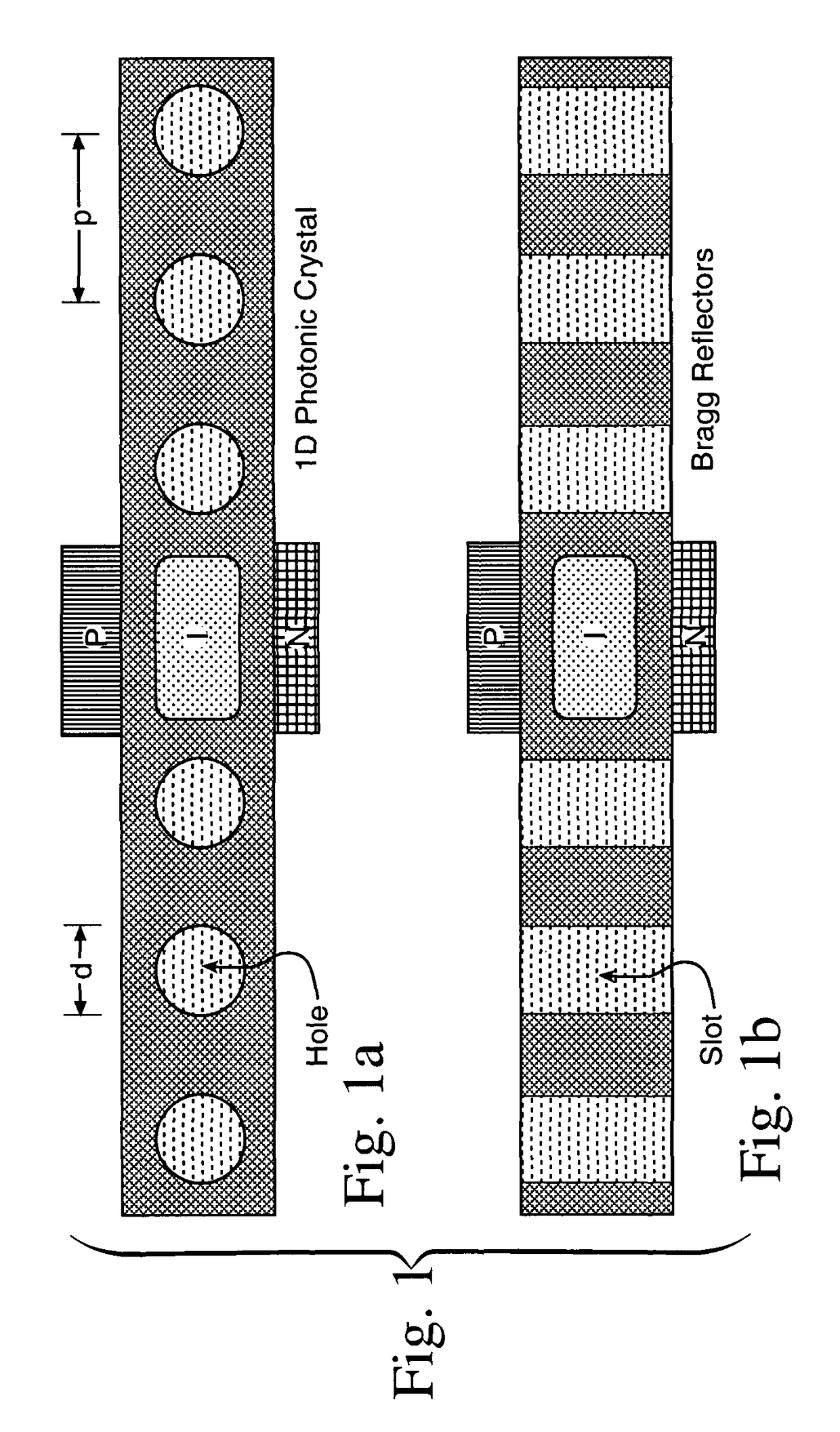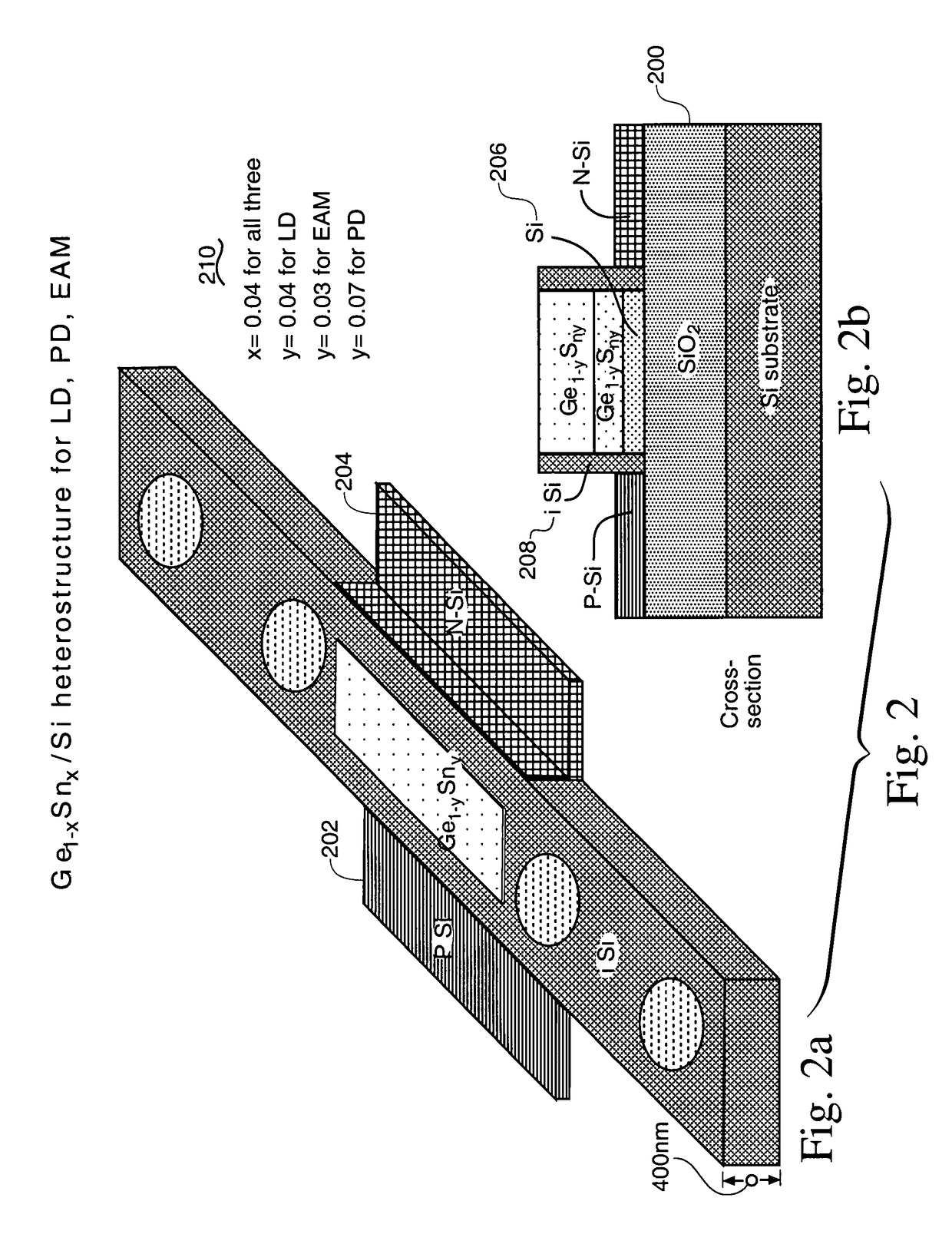Semiconductor photonoic nano communication link method
a technology of photonoic nano and semiconductor, applied in the direction of instruments, optical elements, optical waveguide light guides, etc., can solve the problems of unsatisfactory material set for lasing, modulation, detection functions, etc., to improve photonic modulation, absorption and gain functions, and relax phonon-assistance rule effects
- Summary
- Abstract
- Description
- Claims
- Application Information
AI Technical Summary
Benefits of technology
Problems solved by technology
Method used
Image
Examples
Embodiment Construction
[0033]In this invention, the basic structure for each photonic communication link device is a Silicon-on-insulator strip waveguide (i.e., a Silicon nanowire) that becomes a rib waveguide locally along a resonator length, such a waveguide is shown in the views of the FIG. 1 drawing. This FIG. 1 waveguide contains a one-dimensional photonic-crystal (PhC) structure providing a spaced pair of PhC reflectors defining an active micro cavity. Reflectors may be a set of air or oxide filled holes etched through the Silicon strip, or a set of deeply etched air or oxide filled slots that define Bragg-grating mirrors straddling the cavity. Typically, these holes and slots are filled with Silicon dioxide, SiO2. The resonator is located in the hole-defect(s) or slot-defect(s) of the 1D lattice as shown in FIGS. 1a and 1b, respectively. The local rib regions do not disturb significantly the propagating mode in the SOI strip
[0034]For the 1550 nanometer wavelength spectral region, the hole diameter,...
PUM
 Login to View More
Login to View More Abstract
Description
Claims
Application Information
 Login to View More
Login to View More - R&D
- Intellectual Property
- Life Sciences
- Materials
- Tech Scout
- Unparalleled Data Quality
- Higher Quality Content
- 60% Fewer Hallucinations
Browse by: Latest US Patents, China's latest patents, Technical Efficacy Thesaurus, Application Domain, Technology Topic, Popular Technical Reports.
© 2025 PatSnap. All rights reserved.Legal|Privacy policy|Modern Slavery Act Transparency Statement|Sitemap|About US| Contact US: help@patsnap.com



